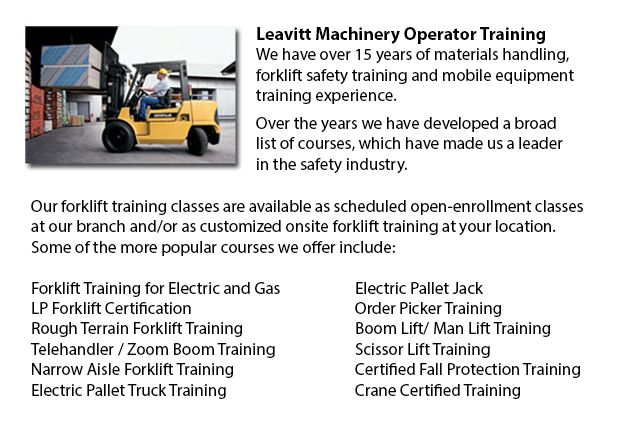
There are actually two unique classifications of forklifts within the materials handling market, the industrial model and the rough terrain model. Rough terrain forklifts initially arrived on the marketplace in the 1940's and had been predominantly used on rough surfaces, ideal for areas where no covered surfaces were accessible, like construction sites and lumberyards.
Usually, most rough terrain forklifts are run on a propane, diesel or gasoline driven internal combustion engines with a battery used for power. Some makers are playing with rough ground forklifts that consume vegetable matter and run from ethanol. Large pneumatic tires with deep treads distinguish these vehicles to allow them to clutch onto the roughest ground type without any misstep or shifting.
Some of the earliest versions of rough ground forklifts had the ability to lift in excess of 1000 lbs, by means of forks that could slide under the item, lift it marginally and move it to an alternate site. After ten years on the market, rough terrain forklifts were reinforced with additional carrying muscle, increasing the potential cargo to more than 2000 lbs. In the 1960's telescoping booms were added, allowing them to stack materials a great deal higher than in previous years. The telescoping design characteristic is a staple of most rough terrain forklifts at the moment. Present models are capable of handling well over 4000 lbs due to the continual improvements through the years. Telescoping capability has additionally improved with some versions achieving a height of 35 feet. Worker safety has also become a focus with several rough terrain forklifts currently built are equipped with an enclosed cab for the operator, as opposed to the older open air seating capacity.
The all terrain lift trucks existing today work equally as well on paved floors as on unpaved surfaces. These rough terrain lift trucks are being marketed for their adaptability permitting establishments to transfer items from outside the facility to the inside or vice versa.
-
Crown Forklift
More -
JLG Telehandler
After retiring in the late 1960's, John L. Grove started on a cross country RV voyage. After spending many years establishing his family built crane business with his brother, John had no idea that this journey would give birth to the rise of JLG Ind... More -
Clark Forklift
Currently, there are no less than 350,000 Clark lift trucks performing worldwide, and more than 250,000 in commission in North America alone. With five major lines across the globe, Clark is proud to be one of the most expansive companies in the indu... More -
Genie Forklift
Genie Industries prides itself with the concept of lifting individuals and resources higher, extending beyond the products they design. A global company that is deeply connected to their clients and enjoys reflecting the spirit of relationship with a... More -
Toyota Forklift
In the U.S., Toyota Materials Handling inc., or TMHU, continues to be the top selling lift truck dealer since 1992. This company has been headquartered out of Irvine, California for well over 40 years, providing a wide-ranging line of quality lift tr... More

Forklift Training Tukwila
TOLL FREE: 1-888-254-6157
Tukwila, Washington
forklifttrainingtukwila.com
Email Us
About Us


